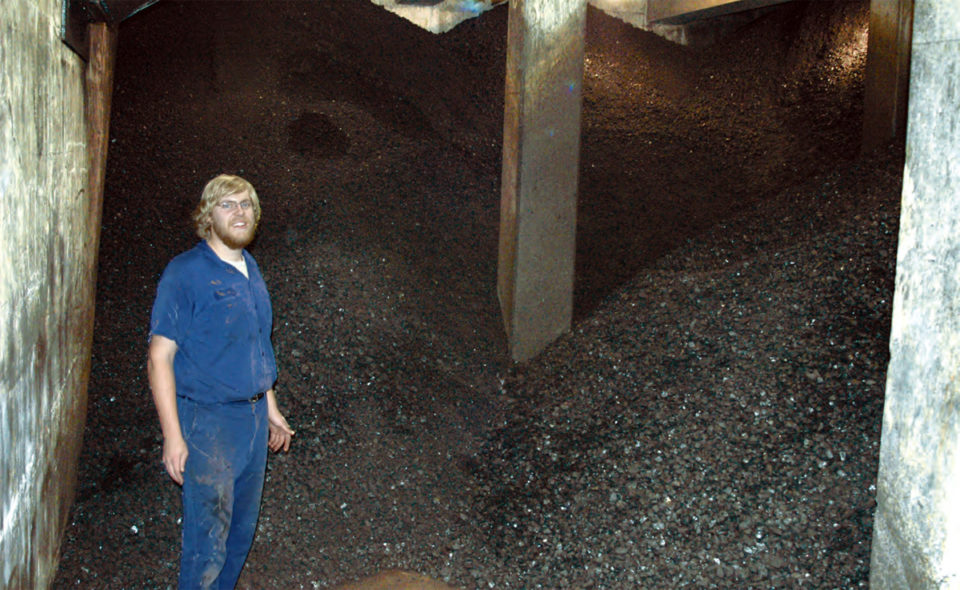The heat is on
February 24, 2006
Award-winning journalism
This story won second place in feature writing in the 2006 Collegiate Better Newspaper Contest sponsored by the Wisconsin Newspaper Association Foundation. Read more
As gray, billowy smoke rolls from the 163-foot smoke stack, students, staff and faculty go about their daily activities, unaware of the impact the Central Heating Plant has on their lives. “Our mission is to provide uninterrupted steam to the buildings on campus,” Central Heating Plant Supervisor Bill Girnau said.
Although the heating plant has been a staple on campus, located behind Rodli Commons, since 1964, it is not unusual to find some students who are unaware of its intended purpose.
"Isn’t that where they burn the garbage?" senior chemistry and mathematics double-major Al Stumph said, upon mention of the red-brick building.
Although some heating plants do burn refuse as an alternative, this particular plant uses coal, natural gas and, on occasion, oil to provide heat to 27 buildings on the UW-River Falls campus. The plant is already providing heat to the new Student Union while it is under construction.
However, the heating plant does not provide heat to Hunt Arena, the Knowles Center or the new Knowles addition, due to the location of the facilities. Environmental concerns have prevented the plant from running steam pipes underneath the Kinnickinnic River.
Although 95 percent of the steam is used for the heating of buildings, it is also used for other purposes.
Heating water, cooking food, drying athletic clothing and running sterilizers, humidifiers, pasteurizers and distillers are just a few other uses, Girnau said.
Due to high costs, oil is used primarily as a standby fuel, whereas coal is mainly used in the winter and gas in the summer, Girnau said. Coal is more abundant and cheaper to use than natural gas during the colder months of the year.
In the winter, the plant goes through an ample amount of coal to keep the buildings heated. It is not uncommon to find about 300 tons of coal stored in the heating plant during this time.

“We burn 25 tons of coal a day on average, with 40 tons being the high,” Girnau said.
The ability to use coal as an alternate fuel source has allowed the plant to maintain a reasonable annual fuel bill.
“The concept of the heating plant is to provide steam cheaper and more efficiently than if each building had its own boiler,” Girnau said.
As the fuel burns, heat is transferred through water-filled tubes, heating the water until it boils and produces steam.
The 338-degree steam leaves the plant with a pressure of 100 pounds per square inch (psi), and is carried via several miles of underground pipe to each of the buildings on the campus. When it reaches the buildings, the pressure is reduced to between five and seven psi before it is released through the heating system vents, Girnau said.
As the steam heats the buildings, it condenses and the water is pumped back to the heating plant to be reheated and reused.
According to the Wisconsin Department of Natural Resources (WDNR) Web site, the U.S. Environmental Protection Agency maintains air quality standards for fine particulate matter or very small bits of material, such as smoke, that can cause impurities in the quality of the air.
Environmental concerns are closely monitored by the WDNR as well. The WDNR requires that plants such as the Central Heating Plant maintain certain standards in order to keep its operating license.
“Both particulate matter and sulfur dioxide are tested in the stack every two years,” WDNR Air Management Engineer John Stoffel said.
When the building was erected in 1964, all of the equipment used to operate machinery in the plant was run on air. Now, everything has been converted to run electronically from a single switchboard in the control room.
The heating plant has seven full-time employees, operating the plant around the clock.
“We have a small crew. I’m the supervisor, and we have an operator in chief who is the lead mechanic, and there are five operators,” said Girnau, who has been on the Central Heating Plant crew since 1977.
All of the full-time employees maintain rigorous work schedules that are posted nearly a year in advance. If any of the workers need time off to attend their children’s extracurricular activities, they must use vacation time, Girnau said.
At the end of spring semester after students have removed all of their belongings from the residence halls, the plant closes down for two weeks.
